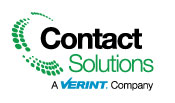Governing Institute’s new study “Citizen Engagement Modernization in the State Contact Center” examines how the modernization of contact centers can both improve citizen engagement and address operational needs. In Part 1 of this post series, we examined how research results identified methods to improve the citizen experience. Now in Part 2, we discuss how research results identify backend modernization needs that address outdated technology, inefficient processes, and staffing and operational burdens to improve state worker productivity.
Governments are challenged with juggling resources and demand
Governing Institute’s research finds that government contact centers face a variety of operational challenges that impact citizen engagement, including staffing, budgets, decentralization and poor efficiency, lack of knowledge management and lack of understanding around the citizen experience. While serving citizens has become more complex, so have the internal processes built on outdated technology.
If the operational foundation of the state’s contact center isn’t up to date and functioning efficiently, how then can state workers be expected to perform at their best? As the study shows:
- Agency leaders realize it’s time to change processes and systems at the core to reduce operational burdens and inefficiencies.
- Contact center interactions are heavily rooted in traditional communication channels.
78% of state contact centers still rely on phone calls with a live agent to engage citizens, while 57% still rely on email and in-person communication.
Systems and processes need modernizing
 As state leaders validated in the research findings, there’s as much focus on improving staff knowledge as there is in having systems functioning optimally to improve processes and procedures. As technology advances, so does citizen demands and the way they prefer to interact. The juxtapose impact is that the skill set of the state worker and tools that state agencies need to support new and improved communication methods also must be addressed.
As state leaders validated in the research findings, there’s as much focus on improving staff knowledge as there is in having systems functioning optimally to improve processes and procedures. As technology advances, so does citizen demands and the way they prefer to interact. The juxtapose impact is that the skill set of the state worker and tools that state agencies need to support new and improved communication methods also must be addressed.
Survey respondents who reported that their state workers do not have access to all the information they need to resolve citizen requests through the contact center in a timely manner cited the following reasons:
- 75% are missing an integrated or modernized case management/CRM system
- 62% are missing the ability to access data from other in-state programs/agencies
- 50% are missing separate case management/CRM tools that supplement a case management/CRM system
At the same time, these contact centers seek staff efficiency improvements:
- 42% are looking to automation to mitigate staffing challenges and improve operational efficiency
- 52% cited streamlining processes and speeding time to resolution as the most important factor when considering staff modernization initiatives
How can contact centers modernize to address agency needs?
Modernization that includes a comprehensive self-service strategy, digital engagement and better knowledge management solutions can help agencies achieve their two most important goals: resolving staffing challenges and improving service delivery for citizens.
The survey identified the following solutions for contact center modernization.
- Self-service: Agencies can save money and serve citizens the way they want to be served by leveraging traditional channels such as IVR (which creates a personalized experience for callers and helps prevent fraud) with new digital tools such as mobile apps and online messaging platforms.
- Knowledge management/CRM/backend reporting: Backend reporting provides data captured through citizen self-service activities. If an inquiry cannot be resolved through self-service, backend reporting ensures staff have access to critical information to optimize service and increase efficiency. These tools provide a centralized location for all data and speed time-to-resolution for agencies, which was identified as the top modernization factor for improving employee engagement by more than half of respondents.
- Backend automation: As the respondents above find, automation is key to addressing staffing challenges, and this is a priority for agencies. Backend automation can free up staff time to enable streamlined operations, scheduling, workflows, information sharing and routine processes.
- Data sharing: Access to shared information was cited most frequently as a helpful solution for contact centers.
The good news: it’s a win-win situation!
What citizens want and what government contact centers need to operate efficiently is one in the same. Government agencies can please their citizens while they streamline service and save money.


